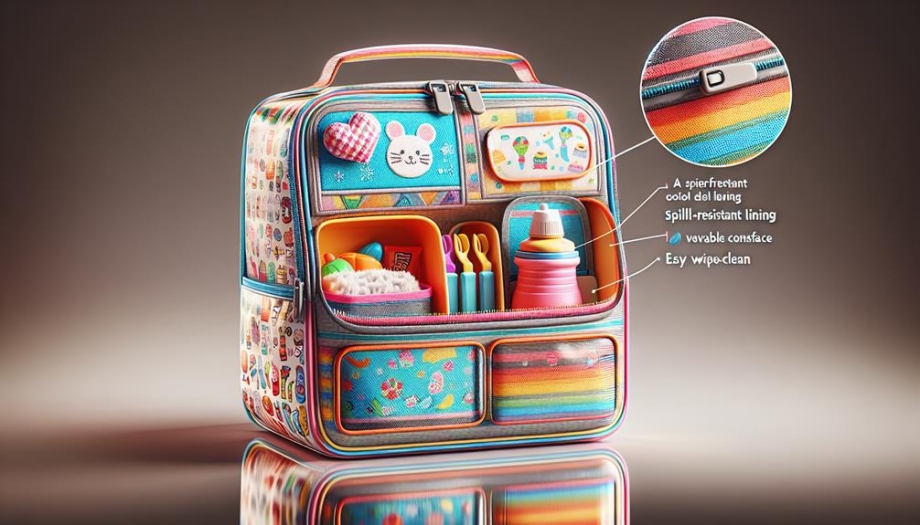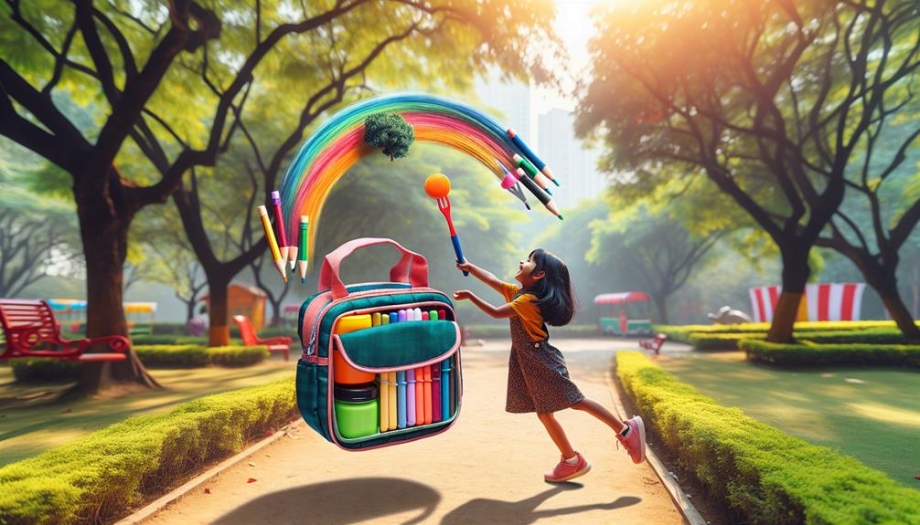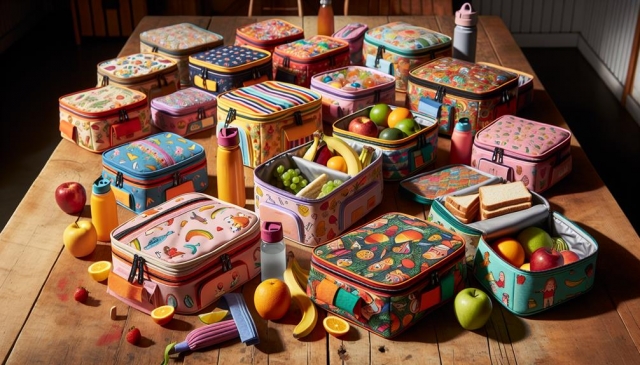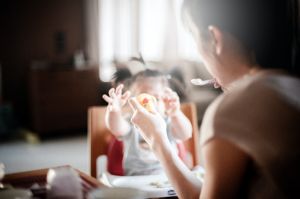When choosing a kids' lunch bag, you need to focus on several key factors to guarantee it meets your child's daily needs. Insulation quality is paramount to keep food fresh and safe, but don't overlook the importance of size and capacity for a balanced meal. Durability and material safety, including BPA-free options, are essential for long-term use and health. Ease of cleaning with wipeable interiors can save you a lot of time. But what about the small details like compartmentalization, leak-proof designs, and fun, engaging designs? There's more to take into account than you might think.
Insulation Quality
Ensuring your child's lunch stays fresh and safe starts with choosing a lunch bag that has high-quality insulation. Good insulation helps maintain the temperature of perishable items, reducing the risk of foodborne illnesses.
Look for lunch bags with thick, foam insulation that keeps food cold for hours. This is vital in preventing bacteria growth, which can occur when food sits in the temperature danger zone (40°F - 140°F) for too long.
When selecting an insulated lunch bag, check for materials like PEVA or PVC-free liners, which aren't only effective at insulation but also safer for your child's health. These materials are easier to clean and less likely to harbor bacteria.
Additionally, bags with multiple layers of insulation provide better thermal resistance, ensuring your child's food remains at a safe temperature until lunchtime.
To further boost the bag's cooling capabilities, consider using ice packs. Place them strategically around perishable items to keep them cold.
Size and Capacity
Choosing the right size and capacity for your child's lunch bag is essential to guarantee it holds all the necessary items without being too bulky or cumbersome.
First, consider the typical contents of your child's lunch. A balanced meal often includes a sandwich or main dish, fruits, vegetables, a snack, and a drink. Opt for a lunch bag that can comfortably fit these components while leaving a bit of room for occasional extras, like a special treat or an extra drink on hot days.
Next, think about portion control and healthy eating habits. A lunch bag that's too large might encourage overpacking, leading to overeating or food waste. Conversely, a bag that's too small won't accommodate all the nutritious choices needed for a balanced diet.
Look for compartments or adjustable sections to keep different food groups separate and prevent squashing delicate items like berries or sandwiches.
Durability
A durable lunch bag is essential to withstand daily wear and tear, ensuring your child's meals stay safe and fresh throughout the school year.
When selecting a lunch bag, look for reinforced stitching, as it's less likely to fray or come undone. Double-stitched seams provide added strength, especially in high-stress areas like zippers and handles.
Opt for a lunch bag made from high-denier fabrics. Denier measures the fabric's thickness; higher numbers indicate greater durability. Materials like polyester or canvas are popular choices because they're tough and resistant to tears.
Additionally, water-resistant or waterproof linings can protect the contents from spills and leaks, making the lunch bag easier to clean and maintain.
Check the quality of the zippers and closures. Metal zippers tend to last longer than plastic ones and are less likely to break under pressure.
Velcro closures should be strong enough to keep the bag securely closed yet easy for your child to open.
Material Safety
When picking a lunch bag, you should prioritize materials free from harmful chemicals like BPA, phthalates, and lead to protect your child's health. These chemicals can leach into food and drinks, potentially causing long-term health issues. Opt for lunch bags made from safer materials to guarantee your child's meals are as healthy as possible.
Here are four key things to look for:
1. BPA-Free Materials: BPA (Bisphenol A) is a chemical often found in plastics that can mimic hormones in the body, leading to potential health risks. Choose lunch bags labeled as BPA-free to avoid this hazard.
2. Phthalate-Free Options: Phthalates are chemicals used to make plastics more flexible and can be found in some lunch bag linings. Exposure to phthalates has been linked to developmental issues in children. Make sure the bag explicitly states it's phthalate-free.
3. Lead-Free: Lead exposure can cause serious health problems, especially in children. Verify that the lunch bag is certified lead-free to eliminate this risk.
4. Food-Grade Materials: Look for lunch bags made from food-grade materials that are safe for direct contact with food. These materials are rigorously tested to be free from harmful substances.
Ease of Cleaning

In addition to choosing safe materials, you'll want a lunch bag that's easy to clean to guarantee it remains hygienic for daily use. Opt for lunch bags with wipeable interiors and exteriors. Materials like PEVA and BPA-free plastic are excellent choices because they're non-toxic and can be cleaned with a simple swipe of a damp cloth.
Removable liners are another feature to take into account, as they can be taken out and thoroughly washed, reducing the risk of bacteria buildup.
Look for lunch bags that are machine-washable. This feature not only saves you time but guarantees a deep clean that hand wiping may not always achieve. Make sure to check the manufacturer's instructions, as some bags may require a gentle cycle or air drying to maintain their shape and durability.
Lastly, avoid lunch bags with too many nooks and crannies where crumbs and spills can hide. A sleek, simple design is generally easier to maintain.
Regularly inspect and clean your child's lunch bag to prevent mold and odors. Keeping the lunch bag clean guarantees your child's food stays safe and fresh, contributing to their overall well-being.
Leak-Proof Design
Guaranteeing your child's lunch bag has a leak-proof design is essential for maintaining cleanliness and preventing spills that could lead to contamination. A leak-proof bag not only protects the food inside but also keeps your child's belongings dry and sanitary.
Here are some key features to look for:
1. Sealed Seams: Look for lunch bags with heat-sealed seams. These prevent liquids from seeping through the stitching, which is a common weak point in non-sealed bags.
2. Durable Materials: Opt for bags made from high-quality, waterproof materials like nylon or polyester. These materials are less likely to absorb spills and are easier to wipe clean.
3. Secure Closures: Zippers, Velcro, and even magnetic closures can all play a role in keeping the bag leak-proof. Make sure the closure system is robust and fully seals the bag when shut.
4. Inner Liners: An inner liner made of waterproof material can act as an additional barrier against leaks. Look for BPA-free, food-grade liners to guarantee safety and ease of cleaning.
Weight and Portability

Choosing a lightweight and portable lunch bag can greatly ease the burden on your child, making it easier for them to carry their meals comfortably. Research shows that children carrying heavy bags are at higher risk for back and shoulder pain, which can affect their posture and overall health. Opt for lunch bags made from materials like polyester or nylon, which are both durable and light.
Look for features like padded straps or handles, which can reduce pressure on your child's shoulders and hands. Adjustable straps are particularly beneficial as they allow for a customized fit, enhancing comfort and ergonomics. A compact, foldable design can add to the bag's portability, making it easier for your child to store it in their backpack or locker.
Also, consider the bag's size relative to your child's age and stature. A lunch bag that's too large can be cumbersome, while one that's too small won't adequately carry all their food items. Aim for a balance where the bag is spacious enough for a nutritious lunch but not overly heavy.
Prioritizing weight and portability can make a significant difference in your child's daily comfort and well-being.
Compartmentalization
Compartmentalization within a lunch bag can help keep your child's food organized and fresh, reducing the risk of spills and cross-contamination.
When you have separate compartments, you can easily allocate spaces for different food types—keeping fruits away from sandwiches and snacks away from main meals. This layout helps maintain the integrity and taste of each food item, guaranteeing that your child enjoys a nutritious, appealing lunch.
Here are four essential features to look for:
1. Multiple Sections: Choose a lunch bag with multiple sections to separate dry and wet foods. This prevents moisture from affecting items like crackers or bread.
2. Insulated Compartments: Insulated sections help maintain the temperature of hot and cold foods, keeping them safe to eat. This is particularly important for items like yogurt or soup.
3. Easy-to-Clean Dividers: Opt for dividers that are easy to remove and clean. This guarantees that you can maintain a hygienic environment, reducing the risk of bacterial growth.
4. Flexible Space: Look for adjustable compartments that can accommodate a variety of containers, making it easier to pack different foods without squishing them.
Closure Type
Once you've selected a lunch bag with proper compartmentalization, the type of closure you choose is equally important for keeping food secure and fresh.
Look for closures that seal tightly to prevent leaks and maintain the temperature of the food. Zippers are often the most reliable, offering a secure seal that keeps contents from spilling out, which is vital for preventing messes and maintaining food hygiene.
Velcro closures can be convenient for younger children, as they're easier to open and close. However, they mightn't provide as tight a seal as zippers, potentially compromising the freshness of the food.
Magnetic snaps are another option, offering ease of use and a decent seal, though they mightn't be as secure as zippers.
Additionally, consider double closures for added security. A lunch bag with both a zipper and a Velcro flap can offer the best of both worlds, ensuring that even if one closure fails, the other will keep the bag shut.
This is especially useful for active kids who might toss their lunch bags around.
Handle and Straps
A well-designed handle or strap on a kid's lunch bag can greatly enhance comfort and ease of carrying, making it more likely your child will happily bring their lunch to school. When choosing a lunch bag, focus on ergonomics and durability.
Here's what you should consider:
1. Adjustability: Adjustable straps allow the bag to grow with your child, guaranteeing a proper fit and preventing back or shoulder strain. Look for padded straps for added comfort.
2. Reinforced Handles: A reinforced handle can withstand daily wear and tear, making it less likely to break under the weight of a fully packed lunch. Verify the stitching is robust.
3. Multiple Carrying Options: A lunch bag with both a handle and a shoulder strap gives your child the flexibility to carry it in the most comfortable way. This option can reduce muscle fatigue and encourage better posture.
4. Breathable Material: Straps made from breathable, non-irritating materials help prevent sweating and skin irritation, which is particularly important for active kids.
Fun Designs
Choosing a lunch bag with fun designs can make your child more excited about bringing their lunch to school, encouraging them to eat healthier meals. Research shows that children are more likely to engage in positive behaviors when they find the tools associated with those behaviors enjoyable. A lunch bag featuring their favorite characters, animals, or vibrant patterns can transform lunchtime into something they look forward to every day. For an extensive selection of engaging and fun lunch bags for kids, consider exploring options that reflect your child's interests and personality.
When selecting a design, consider your child's personal interests. Involving them in the choice can give them a sense of ownership and pride in their lunch. This can have a positive impact on their eating habits, as they're more likely to look forward to unpacking their lunch and eating it.
Additionally, aim for designs that are durable and easy to clean. Fun doesn't have to mean impractical. Look for bags made from washable materials, as they can withstand the inevitable spills and stains.
Price and Value
While fun designs can make lunchtime more appealing, it's also important to take into account the price and value of the lunch bag to guarantee it meets your budget and functional needs. Not all lunch bags are created equal, and paying attention to cost-effectiveness can assure you're making a wise investment.
Durability: A high-quality lunch bag should withstand daily use and frequent washing. Look for materials like reinforced stitching and heavy-duty zippers to extend the bag's lifespan.
Insulation: Effective insulation keeps food at safe temperatures, reducing the risk of foodborne illnesses. Ensure the lunch bag has thick, high-quality insulation, even if it means spending a bit more.
Ease of Cleaning: Kids can be messy eaters, so choosing a bag that's easy to clean can save you time and effort. Consider options with removable liners or machine-washable fabrics.
Size and Compartments: The right size and number of compartments can make packing balanced, nutritious meals easier. A well-organized lunch bag can also help your child manage their food independently.
Balancing these factors with cost assures you're not just saving money upfront but also investing in your child's health and safety over the long term.
Conclusion
When choosing a kids' lunch bag, focus on insulation quality, size, durability, and safety.
Did you know that 40% of parents say a good lunch bag helps their kids eat healthier?
Opt for easy-to-clean designs with compartments and leak-proof features.
Fun designs can make lunchtime exciting and encourage healthy eating habits.
You don't have to break the bank; there are affordable options that offer great value.
Your child's health and enjoyment are worth it!






